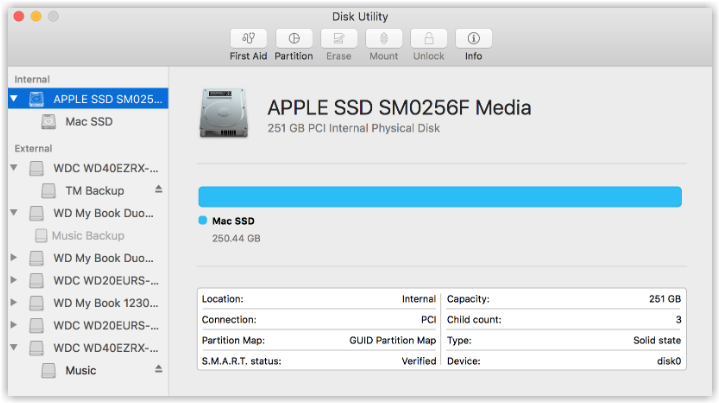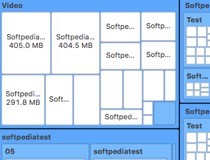

This command will take a while, and once it finishes, you can safely eject the drive through Finder and you should be able to boot from it to install Windows 10 on a PC. When I opened the Windows 10 Fall Creators Update ISO, it mounted as a volume named CCCOMA_X64FRE_EN-US_DV9, so I used the following command to copy its contents to the USB drive:Ĭp -rp /Volumes/CCCOMA_X64FRE_EN-US_DV9/* /Volumes/WINDOWS10/ Eventually I found that using cp from the command-line did work without any issues. Oddly enough, copying the files through Finder did not work for me - I received an error about the files being too large, even though the partition on the drive was definitely big enough, and no individual file appeared to be too large for the FAT32 file system. Disk Utility supports the following schemes: GUID Partition Map: Choose this option for all Intel-based and Apple silicon Mac computers. will scan your disks and displays disk space usage on a sunburst map.

#Mac disk map mac os x#
When you erase and format a storage device in Disk Utility on Mac, you’re asked to choose a scheme to use. The disk usage utility works on Mac OS X 10.3 (and later versions) and combines a. Now you can mount the Windows 10 ISO by opening it through Finder and copy its contents to the USB drive. Partition schemes available in Disk Utility on Mac. Next, the following command can be used to format the drive (replace disk# with the actual identifier for your USB drive) and mount it as a volume named WINDOWS10:ĭiskutil eraseDisk MS-DOS "WINDOWS10" MBR disk#

First, run diskutil list and find the identifier of the USB drive (this will be something like disk2 or disk3 make sure you find the right one, since you could erase the wrong drive and lose data if you don’t use the correct identifier). If Disk Utility reports that the disk appears to be OK or has been repaired, you’re done. When the First Aid process is complete, click Done. In the First Aid dialog, click Run, then follow the onscreen instructions. After some research and a lot of trial and error, I found that the USB drive must be formatted with a FAT32 partition and the MBR partitioning scheme, after which you can simply mount the Windows 10 ISO in macOS and copy the files to the drive.įormatting the USB drive can be done from the command-line fairly easily. In the sidebar, select the storage device, then click the First Aid button. My first instinct was to use dd to copy the ISO to the USB drive (as one typically does when installing a Linux distribution, for example), but it turns out that this does not satisfy the UEFI boot process.
#Mac disk map how to#
Microsoft provides a tool for creating a bootable Windows 10 installation drive from an existing Windows system, but not for macOS, and there is some conflicting information online about how to go about doing that. This was my first time installing Windows 10, and it turned out to be a bit of a challenge, as I opted to purchase a downloadable copy through Microsoft’s website and transfer it to a USB drive on my Mac running macOS High Sierra. I recently put together a new gaming PC for the first time in several years.


 0 kommentar(er)
0 kommentar(er)
